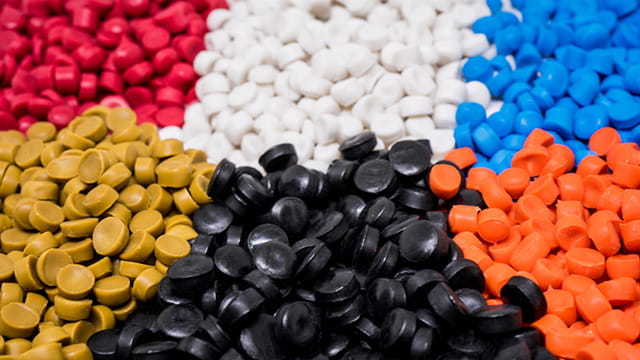
Controlling moisture in engineering and high-performance plastics is critical, as even slight variations can affect the mechanical and physical properties of the component. Hygroscopic materials, such as nylon, ABS, acrylic, PET, PBT, and polyurethane, absorb moisture from their environment. Nylon can absorb as much as 9% of its weight in water. Non-hygroscopic plastics do not absorb moisture internally but may collect on the pellet’s surface.
Moisture within the raw plastic can create defects during processing, such as splay marks (visible streaks on the surface), bubbles, and reduced impact strength. In more extreme cases, moisture can degrade the polymer itself, causing molecular chain scission, which results in brittleness and poor mechanical performance. Additionally, residual moisture can contribute to dimensional instability, which is especially problematic for high-tolerance applications where precision is expected.
By understanding and controlling moisture levels, engineers can avoid these quality issues and ensure that the final product meets performance and aesthetic standards.
Drying ovens are specifically designed to reduce the moisture content of the polymer feedstock before it is molded. These ovens use a combination of heat and airflow to drive off moisture absorbed by or on the surface of the resin. Typically, a drying oven is set to a temperature above the water’s boiling point and below the material’s thermal degradation point. Steady air flow promotes even moisture removal throughout the plastic pellets. Some drying ovens incorporate desiccants to lower the humidity in the chamber, which enhances drying efficiency and can reduce the time required to achieve a target moisture level.
The drying cycle’s duration depends on factors such as the plastic type, initial moisture content, and desired final moisture level. Once removed from the oven, it must be processed quickly as it will begin to absorb moisture again. However, integrated hopper dryers are sometimes used, allowing plastic pellets to be dried immediately before they are fed into an injection molding machine. Properly dried materials lead to more consistent and reliable manufacturing outcomes, reducing defects and ensuring specifications are met.
In injection molding, annealing and post-curing ovens play crucial roles in enhancing the performance and stability of plastic parts. Annealing is a controlled heat treatment used primarily for thermoplastics. Annealing ovens operate by gradually heating the plastic part to a temperature below its glass transition temperature (Tg), holding it there to allow internal stresses to dissipate, and then cooling it in a controlled manner to prevent the reintroduction of stress. The oven must maintain precise temperatures throughout the process to ensure optimal results.
For thermoset plastics, post-curing, rather than annealing, involves a chemical crosslinking process at elevated temperatures to solidify the material and stabilize its properties. Molded items are placed in a forced-air oven and subjected to a sequence of elevated temperatures held for specified durations. This sequence of times and temperatures is known as the cure schedule or cure cycle. During post-curing, water vapor or alcohol may be released as a byproduct and must be managed as voids, bubbles, or weak points within the material can occur if trapped inside. Post-curing ovens for thermosets may be designed to ensure good ventilation or include desiccants or inert atmospheres to manage and remove any byproducts, thus ensuring a solid, defect-free final structure.
The benefits of annealing and post-curing are significant, particularly for applications that require high dimensional stability, chemical resistance, or mechanical strength. Annealing is particularly beneficial for crystalline and semi-crystalline thermoplastics, as the heat allows polymer chains to realign, enhancing crystallinity and thus improving mechanical properties like tensile and flexural strength. The process reduces brittleness and can even improve optical clarity for amorphous plastics, such as polycarbonate. This process helps relieve internal stresses and minimizes the risk of part warping, cracking, or dimensional changes, making it essential for high-precision components. In addition to stress relief, annealing can enhance impact and wear resistance, extending the part’s operational life.
For thermosets, post-curing is required to expedite the crosslinking of the polymer’s chains, which means the molecular chains interconnect through strong covalent bonds to create a rigid three-dimensional network. The thermoset part will continue to cure at room temperature for the next 1-2 weeks. Post-curing achieves a final, rigid structure, giving thermosets their characteristic durability and heat resistance. Post-curing is extremely important for parts that will have secondary machining. These processes create high-quality, reliable plastic components suitable for demanding applications in aerospace, automotive, and industrial equipment.